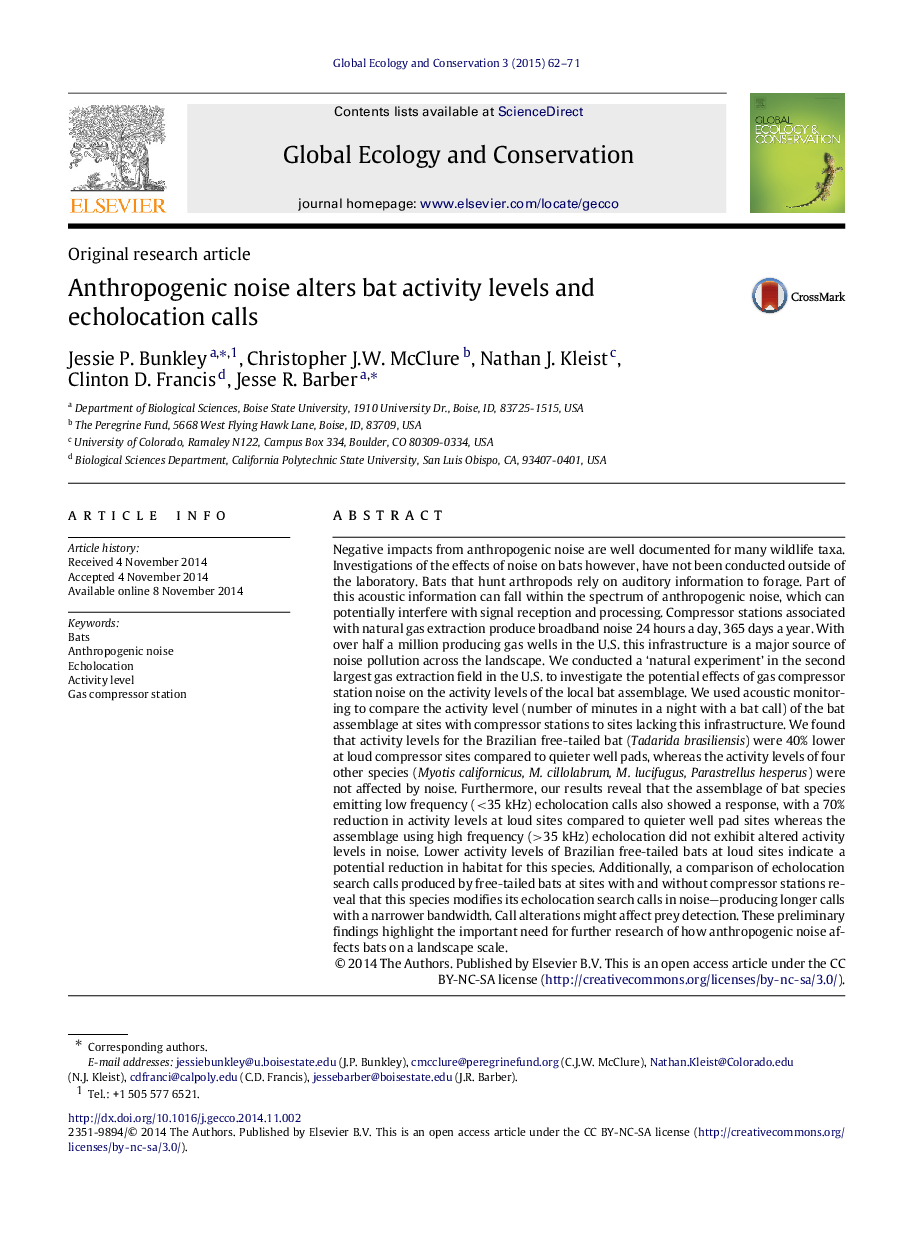| کد مقاله | کد نشریه | سال انتشار | مقاله انگلیسی | نسخه تمام متن |
|---|---|---|---|---|
| 4379555 | 1617664 | 2015 | 10 صفحه PDF | دانلود رایگان |
Negative impacts from anthropogenic noise are well documented for many wildlife taxa. Investigations of the effects of noise on bats however, have not been conducted outside of the laboratory. Bats that hunt arthropods rely on auditory information to forage. Part of this acoustic information can fall within the spectrum of anthropogenic noise, which can potentially interfere with signal reception and processing. Compressor stations associated with natural gas extraction produce broadband noise 24 hours a day, 365 days a year. With over half a million producing gas wells in the U.S. this infrastructure is a major source of noise pollution across the landscape. We conducted a ‘natural experiment’ in the second largest gas extraction field in the U.S. to investigate the potential effects of gas compressor station noise on the activity levels of the local bat assemblage. We used acoustic monitoring to compare the activity level (number of minutes in a night with a bat call) of the bat assemblage at sites with compressor stations to sites lacking this infrastructure. We found that activity levels for the Brazilian free-tailed bat (Tadarida brasiliensis) were 40% lower at loud compressor sites compared to quieter well pads, whereas the activity levels of four other species (Myotis californicus, M. cillolabrum, M. lucifugus, Parastrellus hesperus ) were not affected by noise. Furthermore, our results reveal that the assemblage of bat species emitting low frequency (<<35 kHz) echolocation calls also showed a response, with a 70% reduction in activity levels at loud sites compared to quieter well pad sites whereas the assemblage using high frequency (>>35 kHz) echolocation did not exhibit altered activity levels in noise. Lower activity levels of Brazilian free-tailed bats at loud sites indicate a potential reduction in habitat for this species. Additionally, a comparison of echolocation search calls produced by free-tailed bats at sites with and without compressor stations reveal that this species modifies its echolocation search calls in noise—producing longer calls with a narrower bandwidth. Call alterations might affect prey detection. These preliminary findings highlight the important need for further research of how anthropogenic noise affects bats on a landscape scale.
Journal: Global Ecology and Conservation - Volume 3, January 2015, Pages 62–71
